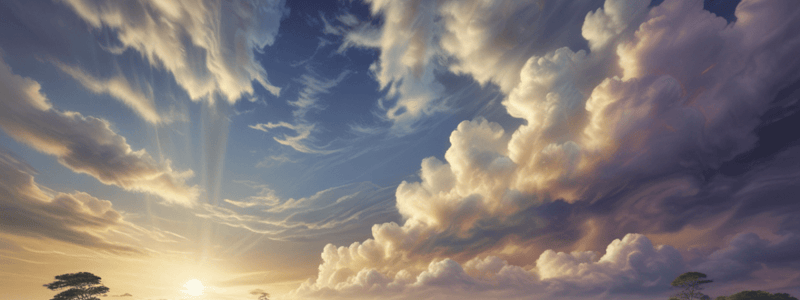Podcast
Questions and Answers
What type of clouds are typically associated with a warm front?
What type of clouds are typically associated with a warm front?
- Cumulonimbus clouds
- Stratus clouds (correct)
- Altostratus clouds
- Cirrus clouds
Which color represents an occluded front on a weather map?
Which color represents an occluded front on a weather map?
- Green
- Red
- Blue
- Purple (correct)
What type of weather is associated with an occluded front?
What type of weather is associated with an occluded front?
- No weather changes
- Gentle rain
- Large amounts of precipitation (correct)
- Sunny skies
Where do warm air masses that form warm fronts usually originate from?
Where do warm air masses that form warm fronts usually originate from?
What causes the boundary between two air masses to be high above the ground in an occluded front?
What causes the boundary between two air masses to be high above the ground in an occluded front?
Where are cold fronts more likely to form in the United States?
Where are cold fronts more likely to form in the United States?
What is the main difference in weather between the area behind and in front of an occluded front?
What is the main difference in weather between the area behind and in front of an occluded front?
In which direction does an occluded front usually move on a weather map?
In which direction does an occluded front usually move on a weather map?
What causes the formation of stratus-type clouds or fog in association with warm fronts?
What causes the formation of stratus-type clouds or fog in association with warm fronts?
What happens as an advancing cold front overtakes a warm front to form an occluded front?
What happens as an advancing cold front overtakes a warm front to form an occluded front?
Flashcards are hidden until you start studying



